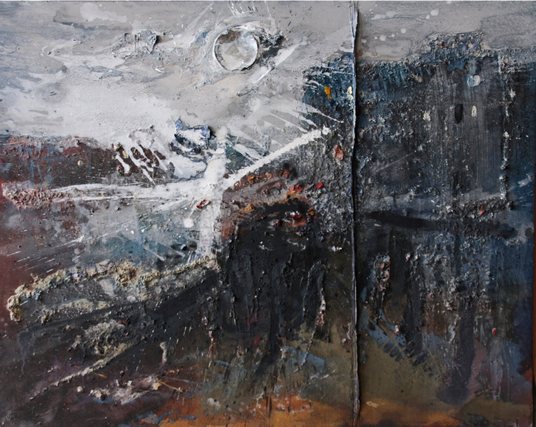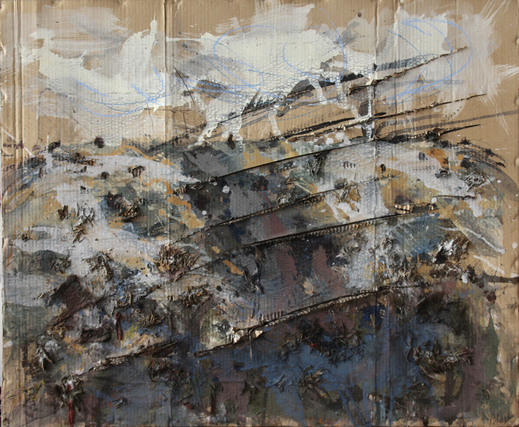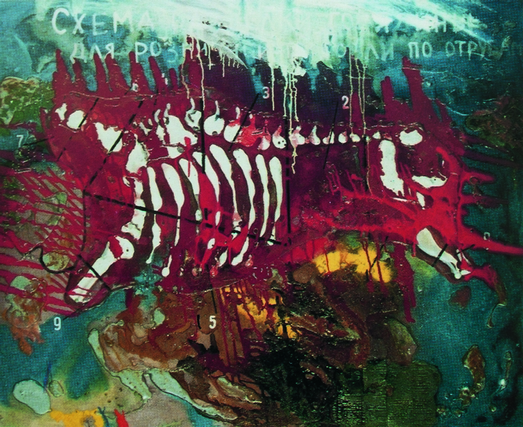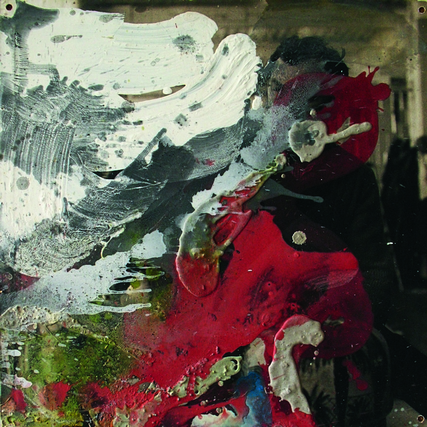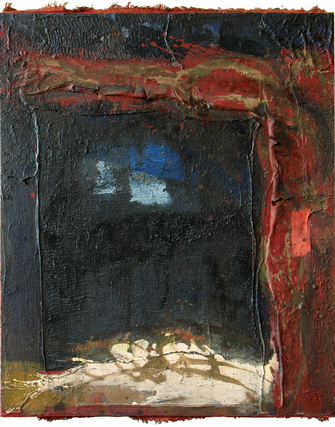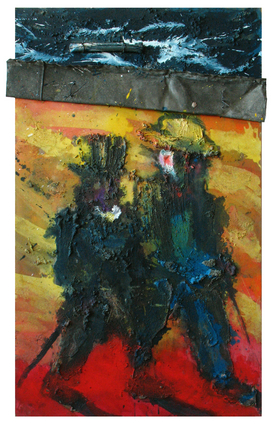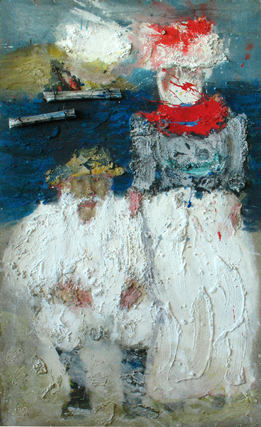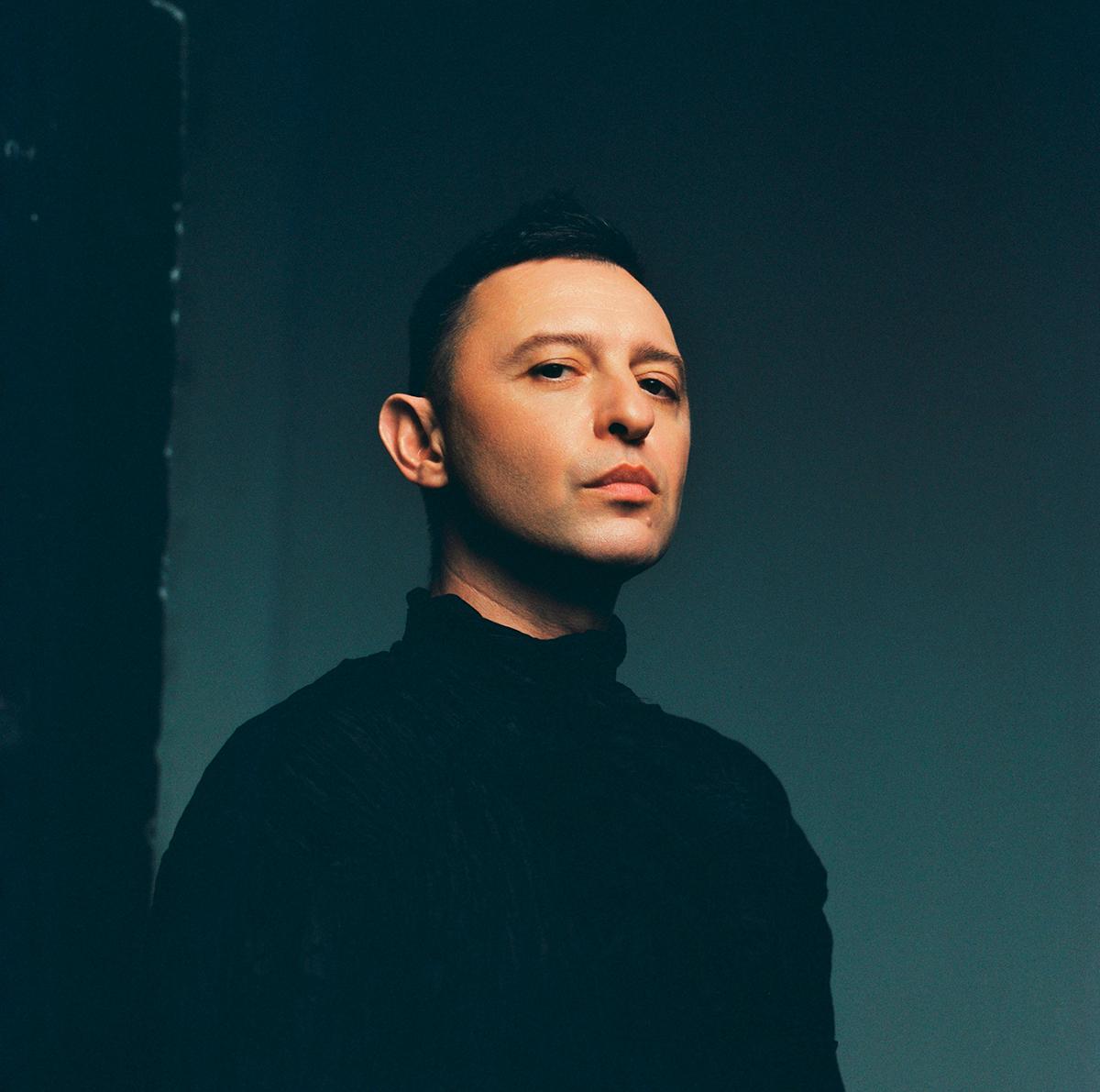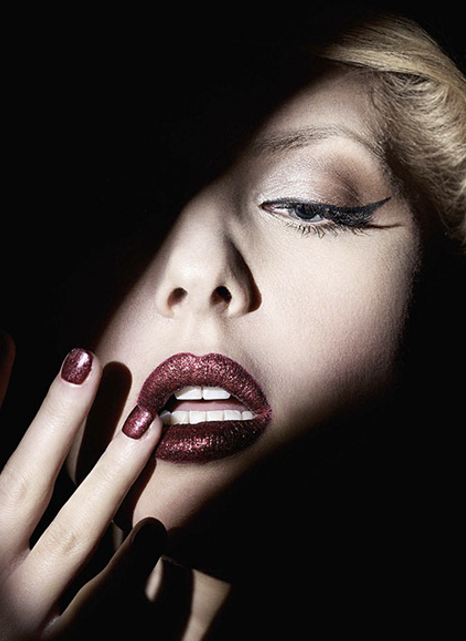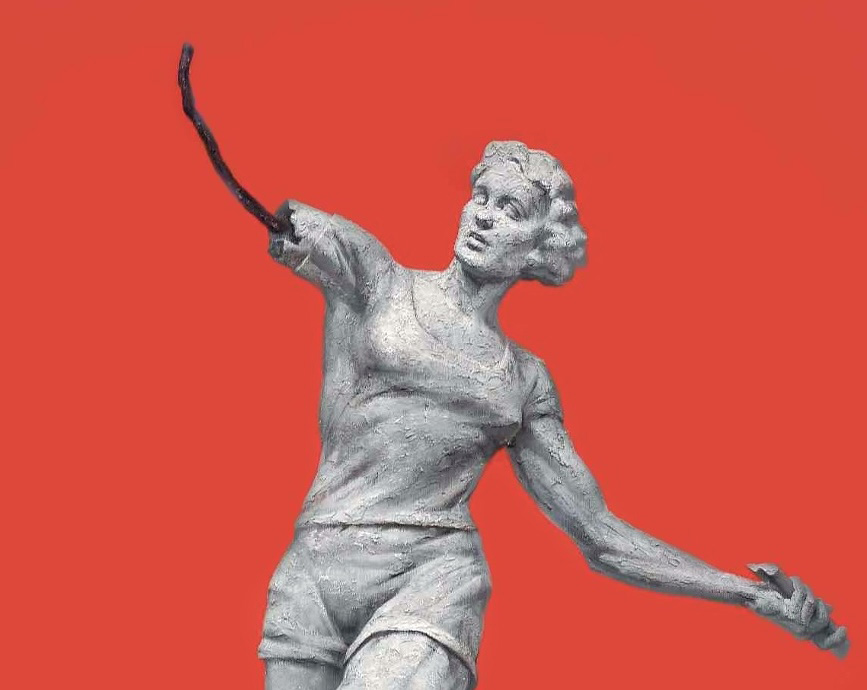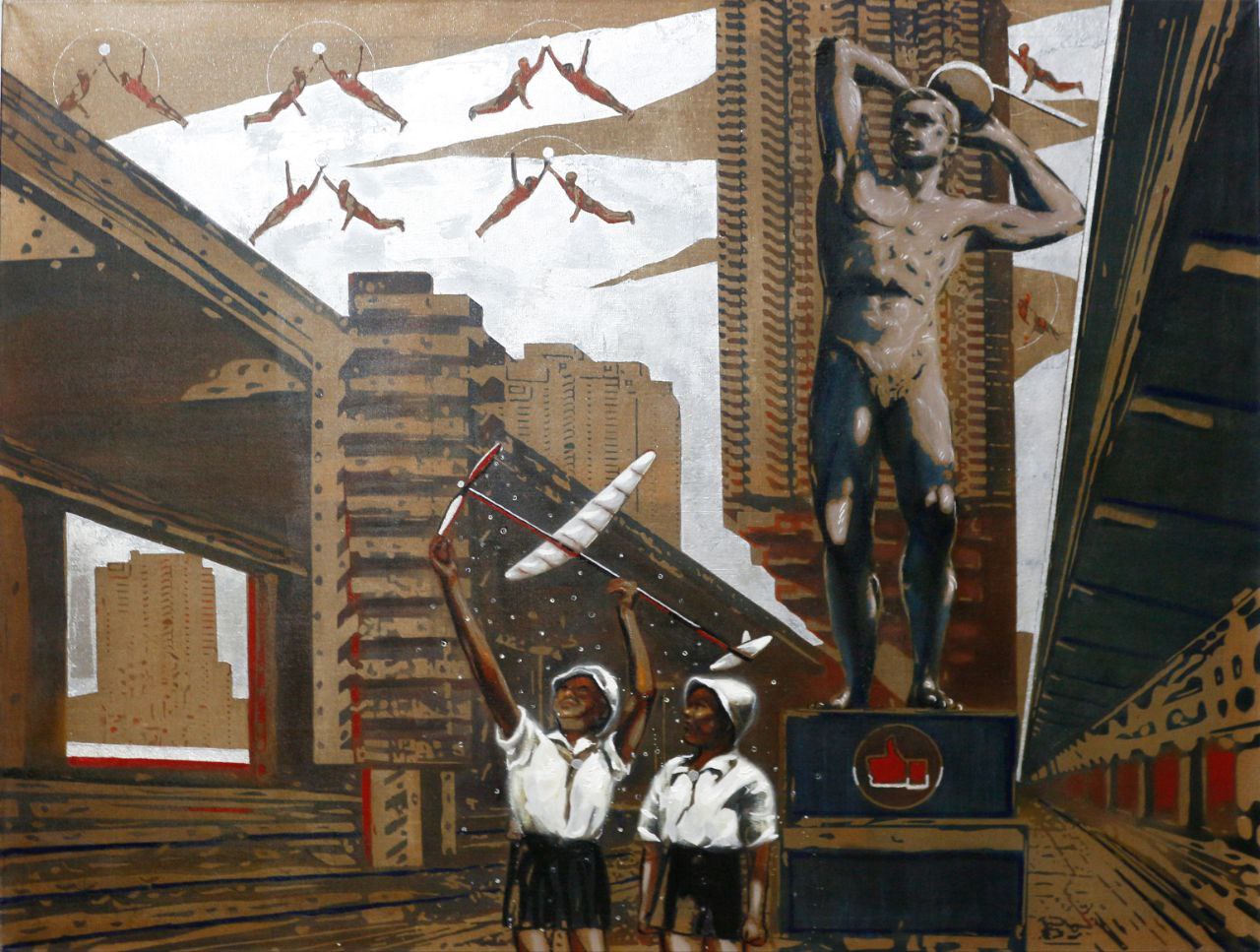From October 10 the solo exhibition by Valery Lukka "Topography" opened at Erarta Museum and Galleries of Contemporary Art
The words “carta” (Greek “χάρτης” meaning “a sheet of papyrus”), “charta” (originally translated from Latin as “charter”), and “mappa” (“mappa mundi”, literally “sheet of the world”) together form a range of the most multiple-meaning words in European languages. There are topographic maps, geographical and solar charts, playing and business cards (carte de visite), Magna Carta, the basis of Western democracy, and dozens of other derivatives and meanings. Map as a way of knowledge structure is abstract and akin to a table: it is the skeleton of a sign system that encrypts visual information and fixes violence against space and time; it copies the socio-historical configuration of power, prevailing in a particular society. Perhaps the real maps differ from those that H.-L. Borges described as a huddle of “animals drawn with finest camel's hair brush” and “so similar to flies when looking from the far”. On the yellowed sheets there are scattered figures of gods, allegories of elements and winds, and fantastic monsters. Being handmade and vintage these “earthy drawings” transfer mathematical topography into the sphere of fine art.
It is interesting to analyze the intermediate position of map between art and science, space and surface, image and text. And we can say that the aspects of such “escape” are investigated in works by St. Petersburg artist Valery Lukka. They are also existing on the border of art and life (full of foreign inclusions), tradition and modernity (refer to museum exhibits and latest news), and even between the surface and volume (high relief). It’s important, that Lukka remains true to the aesthetics he developed over the years (the principle of cartography). And what’s even more important, that his stylistics is eccentric, built on non-standard ideas, “strokes” and gestures, outside of mainstream and commercially amortized abstract decorations. The diapason of Lukka’s abstractions is shifted towards the “frontier” experimental variations; when the title encourages the viewer to search for corresponding scale or “legend” among the texture thickets and sometimes find solutions outside the common sense. Finally, the author’s works are eccentric due to the intentional energy misbalance within the outer well-balanced composition: the painting force field is not congruent with the image field, the voltage “shoots beyond the frames”. Thus, the eccentricity becomes both artistic method and essential characteristic, allowing terminological establishment. The works of different periods show the unity of the artist’s intentions: first of all, focus on the plane of exposure (whether it is “Map of the Empire” or “Figures at the table (Party)”), attraction to amorphous spots (the way he depicts ships in “Celebration on the Neva” or historical characters, such as “Leo Tolstoy and S. A. Tolstoy in the Crimea”), and use of collage technique (almost in all works). Another sense of Lukka’s eccentricity is equality of humans and objects; the hero (even A. Pushkin or a highly respected by the author V. Van Gogh) is not “the measure of all things”, he appears only as a “projection” not more significant than a glued box or a red rag. Of course, it is a result of the latest “autonomy of the aesthetic” (a painter is not an illustrator!) and “postnaturalism” (a painting is not a photograph!). But it can be understood as depriving the viewer (author?) of his privileged position to control the visual experience: if the “place of contemplation” is not fixed, the eyes are randomly wondering along the surface, and all points of view become equally suitable.
The eccentric approach allows the artist not only to hover “above the fight” (as in “War Map”), but also to preserve fruitful neutrality in the confrontation of “figurative” and “non-figurative”. Indeed, when the internal necessity of V. Kandinsky is recycled by Art Deco design, and the “spontaneous dripping” of G. Pollock is degraded to vulgarity, nothing prevents a contemporary artist from placing the figures into “unstable environment”, and even appeal to museum artifacts (“Players” are likely to refer to Cezanne's “The Card Players” from The Courtauld Institute). The difference lies in the catastrophic growth of entropy — the artist’s paintings are still abstraction, wised by the twentieth century experience and posing its eccentricity as one of creative possibilities in the new century. In accordance with the deconstructive theory, “identification” of a figure (in painting) should be considered a private case of admiring, sharpening and enhancing the viewer's perception of reality.
According to the same logic, every centre turns out to be nothing else but a special variation of periphery — in fact they do not exist without each other; the very presence of periphery, environment and circumlocution creates the possibility of “centrality”. The center may shift, or even disappear. Only periphery is stable and unchanging, it is a constitutive notion — both for an integral socio-cultural formation, and for an individual artistic monument. Therefore, the innovative solutions in art are usually born on periphery, on the edges of styles. So eccentricity is a necessary condition of creativity and new values producing.
The final note: applying the deconstructive perspective of the originally offered dichotomy “chart/card” — “painting” (where the first one seems weaker), we see that a chart often becomes a subject of a painting — numerous examples by El Greco, J. Vermeer, G. ter Borch (geographical), Caravaggio, J. Wall, J. de Latour, P. Cézanne (playing).
With its redundant ornamental and figurative details, cards and maps have the potential to turn into paintings or graphic sheets (even if losing their pragmatic status), while a painting is devoid of the reverse ability. A chart/map is fraught with infinitely greater, albeit eccentric potential (both cognitive and artistic), this is why it may serve a successful metaphor for the current state of the art process.
А. Kurbanovsky

